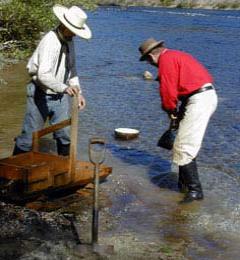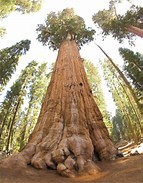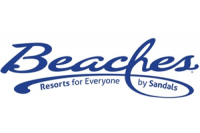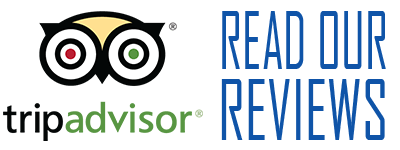LET TRAVELKATZ PLAN YOUR CALIFORNIA VACATION PACKAGE
Travelkatz will put together a California Vacation Package custom tailored just for you. We handle all aspects of your trip so you can sit back, relax and enjoy. We provide three options for every state in the USA. If you have any questions or concerns please don’t hesitate in contacting us.
MILITARY
California Military
California Military – Located in the western United States, California is home to a large native American population as well as Hispanic. Most notable in the names of the communities in and around the state. However, the military plays an important role. It is a coastal state so you can have Navy bases, and historic ships, as well as Air Force, Army and Marine bases and forts. Remember the Spanish American War….
Fort MacArthur Museum: This is an awesome place to visit and learn some of our military history. They have WW2 era equipment and battery. You can enter a section of the bunker where they have shells and vehicles. Beautiful views of the ocean, too! Absolutely, the most fantastic one-hour tour, and there is no charge for entry to this great tour. So much to learn about our military history here. You’ll be shown all of the fort’s pole barns, compartments, hallways, and underground walkways. Alan will be your tour guide. He is so full of knowledge, and you can tell he truly enjoys sharing this museum with you. You’ll have the best time and the other volunteers. The Fort MacArthur Museum is dedicated to the preservation and interpretation of the history of Fort MacArthur, a U.S. Army post which guarded the Los Angeles harbor from 1914 to 1974. The Museum was established in 1985, and it is housed in the corridors and galleries of historic Battery Osgood-Farley. The Fort MacArthur Reservations hold an important collection of historical structures which were part of the U.S. Army’s role in the defense of the American continental coastline from invasion. These structures clearly trace the development of American coastal defenses, from the all big gun era of the turn of the century to the missile era of today .Please don’t forget to offer a donation when visiting this museum in Los Angeles.
Fort Point National Historic Site: From its vantage point overlooking the spectacular Golden Gate, Fort Point defended the San Francisco Bay following California’s Gold Rush through World War II. Its beautifully arched casemates display the art of third system brick masonry and interacts gracefully with the Golden Gate Bridge. What is there to see? Self-guided tours take you to interesting places in the park. The first floor of the fort is accessible. with a raised wooden boardwalk. There is an interactive video kiosk located on the first floor. This kiosk plays a variety of videos including videos that depict the architectural details of the entire fort. Tactile Orientation Maps are provided on each level of the Fort. Listening Devices are provided for the Ranger Led Tours, videos shown in the theater and the Golden Gate Bridge Exhibit. Discover popular destinations as well as places off the beaten track. It’s like having a ranger by your side to guide your trip, giving you suggestions and directions while in San Francisco.
Drum Barracks Civil War Museum: The Drum Barracks, also known as Camp Drum and the Drum Barracks Civil War Museum, is the last remaining original American Civil War era military facility in the Los Angeles area. You won’t find Wilmington, Calif., high on most lists of must-see Civil War locales. A visit to Wilmington’s Drum Barracks Civil War Museum—about 20 miles south of Los Angeles, on the Pacific coast—might change a lot of minds, however. The museum does a wonderful job of shining light on the underappreciated role California and the Southwest Borderlands played during the war. Although remote geographically, California made meaningful contributions during the war. A timeline at the museum presents an overview of history showing political, economic, military, demographic facts, and California “firsts” as themes. Gold from California, for example, is estimated to have financed 25% of the Union war effort. The museum also highlights the use of camels during the war. Secretary of War Jefferson Davis had imported the ruminants in the mid-1850s, believing they would make better pack animals than horses in this climate. In 1862, Drum Barracks received 36 camels, but the experiment ultimately failed; they were incompatible with horses. The museum’s Armory Room displays a camel’s nose plug used for directional purposes. The animals were ultimately sold off. One of the more powerful exhibits is the story of Private William G. Stephens, who received the Medal of Honor for his contributions at Vicksburg on May 22, 1863. Displayed are a 34-star flag that Stephens found on the battlefield, his medal, and a document signed by President Abraham Lincoln and Secretary of War Edwin Stanton commending his service. Stephens’ family moved to California and presented their belongings to the museum. A research library and a nice gift shop are also onsite in Los Angeles.
Travelkatz is waiting to hear from you so we can make the history of our country come alive. Call us at 352-277-7300.
GARDENS
California Gardens
California Gardens – California, a western U.S. state, stretches from the Mexican border along the Pacific for nearly 900 miles. Its terrain includes cliff-lined beaches, redwood forest, the Sierra Nevada Mountains, Central Valley farmland and the Mojave Desert. Hilly San Francisco is known for the Golden Gate Bridge, Alcatraz Island, and cable cars. And don’t forget about Sonoma Valley; there is a NASCAR road track there!
California Botanic Garden: This Non-Profit property boasts diverse native gardens & plants, regular classes, a nursery, and gift shop. This botanical garden features all native Californian plants! The educational signage is excellent, giving both botanical information and easy-to-understand advice for home gardeners. The gardens are quite large and if you walk through the entire area, you will have taken quite a good walk! Lizards, butterflies, ground squirrels, and bunnies are abundant. There are long stretches of the trail where you are exposed to the sun without any shade, so take protective measures against the sun before you go. Most shaded areas have benches. Due to the extreme weather conditions this garden is temporarily closed but will reopen as soon as possible. Found in Claremont.
Santa Barbara Botanical Garden: The trail is amazing and stroller friendly, the signs are most helpful, and the boulders are beautiful. The amazing Red Woods are huge and sit in the valley – the cacti are so pretty. The gift shop is adorable and the plants wonderful. There is so much to offer here at the Santa Barbara Garden. There is a cute maze for kids, plenty of trails, and gorgeous views. These are the smaller coastal redwoods, but still impressive. Also, it’s very interesting seeing the old dam, the stone filter basins, the wooden and stone-lined aqueducts that were established centuries ago that lead to the mission. A very nice gift shop with some very interesting items. This garden is in Santa Barbara.
UCLA Mildred E. Mathias Botanical Garden: A 7.5-acre garden, outdoor classroom, and a research facility on the UCLA campus. This living museum contains a diverse collection of plants from around the world. Come explore this urban oasis, free to the public daily. A peaceful campus botanical garden offering docent-led & self-guided tours, as well as educational programs. It’s beautiful and has a lot of plants and huge trees! It is great to see all this in the middle of the hustle of the city and the campus. The turtles are fun to watch too. Visit this garden when in Los Angeles.
University of California Botanical Garden: The 34-acre UC Botanical Garden is one of the most diverse landscapes in the world, with over 10,000 types of plants including many rare and endangered species. Organized geographically, the Garden features 9 regions of naturalistic plantings with a major collection of California native plants. The beautiful gardens are well maintained and very well curated. You will love that most plants are labelled. Great views across the bay and beyond. Highly recommend here if you are into cacti, ferns, and succulents! It’s also a lovely place for a walk and a great place to relax and enjoy nature. It is rated the best Botanical Garden in the Bay Area, worth the $15 entrance fee. Unique plants, lovely views, great shop. Found in the city of Oakland.
San Diego Botanical Garden: This garden was established in 1970 and is a 37-acre urban oasis located in the city of Encinitas, in north San Diego County. It is to create, share and apply plant wisdom in our world. The Garden’s four miles of trails display more than 5,000 plant species and varieties, including 300 plants for which SDBG is the only garden maintaining a population. There are 15 gardens that represent different regions of the world, 12 demonstration gardens, and the largest public bamboo collection in North America. Included are three children’s gardens, including its flagship, one-acre Hamilton Children’s Garden, the largest kids’ garden on the west coast. Visit this Garden when in San Diego County.
TravelKatz is looking forward to “chatting” at www.travelkatz.com or talking with you at 352-277-7300 to help you have a great vacation in California.
STATE PARKS
California State Parks:
California State Parks – This state contributes several state parks for us to visit. Namely – 110 State Parks, 9 State Recreation Areas, 6 State Forests, 5 State Historic Sites, 5 State Fish Hatcheries, 1 State Nature Preserve, 10 State Reserves, and 10 State Wildlife Areas. Come to California ready to discover this beautiful state.
Point Lobo State Reserves: This park is called the crown jewel of California’s State Park System, and rightly so. It’s one of the most beautiful places in California, equivalent to the National Parks, Lake Tahoe and Big Sur. Moreover, it’s small enough to see in a half day visit, and very visitor friendly to boot, with easy and well-groomed trails (many accessible) and restrooms scattered throughout the park. Watch whales in winter and sea lions all year round at this Bay Area nature reserve, which offers hiking, walking, bird watching, scuba diving and magnificent views. Come to Carmel for the day.
Jedediah Smith Redwoods State Park: One of the finest places on God’s green earth. This is the northernmost of all the great places to see Redwoods. Nice easy access, clean campgrounds and cleaner rivers. Beautiful paths and trees to make one feel at ease and in awe. There are lots of hiking paths, a walking bridge across the Smith River in summer. This park is handicap accessible too. Part of the Redwoods National and State Parks system, this state park was established in 1929. This park is near Crescent City.
Mount Tamalpais State Park: The views of the city and the bay from the top of Mt Tam are unparalleled. You may have to dodge plenty of cyclists and hikers on the curvy road, but the journey is worth it. There are a variety of trails to choose from of different lengths and difficulty. We would like to suggest going during the week if that is an option, because of the popularity on the weekends. This park is in Mill Valley.
Torrey Pines State Reserve: Although this park is located within San Diego’s city limits, it remains one of the wildest landscapes along the Southern California coast, with miles of unspoiled beaches, chaparral, elegant Torrey Pine trees and a lagoon vital to many species of migrating birds. You can golf while in Torrey Pines, too
Asilomar State Beach: The name of this State Beach means “a refuge by the sea,” which describes the views of forest, surf, and sand on more than 105 secluded acres of scenic forest and sand dunes. This State Beach starts at Lover’s Point and follows Ocean View Blvd around Pacific Grove. There is a something for everyone: nice boardwalks, footpaths, expansive tide pools, large crashing waves, lots of wildlife, and seals. There are seats and benches, and rocks to climb at low tide. Offshore you might see whales breaching, or dolphins playing, or in wintertime Gray whales. This state beach is In Pacific Grove.
Anza-Borrego Desert State Park: Within reach of San Diego, this State Park offers great hiking, off-roading, the chance of seeing the elusive Big Horn Sheep, and spectacular displays of wildflowers. Visit during the winter months, as the area is unbearably hot during the summer. Anza-Borrego is one of the best places to view the night sky and you may see breathtaking views atop the cliffs or sunsets over the washes and gully’s that stretch across the valley floor. Four wheels are a must if you want to see the interior of this natural wonderland. Try one of the trails overlooking the valley floor. Take plenty of water, food, and if you’re staying to see the stars bring warm clothes and a good pair of binoculars or telescope. This Park is the Grand Canyon of California. You’ll find this State Park in Borrego Springs.
Wilder Ranch State Park: The coastal trail called Old Cove winds up above protected beaches, rock outcrops in the ocean and one can walk down to a fern grotto with overhanging cliff that drips gently above your head all year long. For serious hikers, there are 34 miles of trails rated moderate – difficult. But for scenery, the Old Cove Landing Trail which is rated easy is hard to beat. It is in the park and hugs the coastline, providing dramatic views of the ocean. Don’t miss the opportunity to experience the equestrian trails as you discover the beauty of this park. It is not unusual to have fog in the morning, but it dissipates by noon. Drive to Santa Cruz to visit this park.
TravelKatz will be happy to help you have a great time in the state parks of California as they are open.
Our number is 352-277-2700. Read all about these state parks on www.travelkatz.com
MUSEUMS
California Museums:
California Museums are in a state that stretches for 600 miles along the Pacific. The city of Los Angeles is the seat of the Hollywood entertainment industry and many museums; San Francisco is known for the Alcatraz Island tour. Southern California is known for a wonderful Presidential Museum.
Ronald Reagan Presidential Library and Museum: The Ronald Reagan Presidential Library and Museum is a must-see in Southern California. Walk onboard Air Force One, act in a movie with Ronald Reagan, touch a piece of the Berlin Wall, and so much more. The patriotism of the country and the man comes through loud and clear. The view from the mountains of Simi Valley is a regal one from every direction, even after the fires. The access to a full-size Air Force One plane and the full arsenal of the secret service vehicles are impressive. Overall it is a tribute to the ability of a politician to work towards pulling Americans together. Ronald Reagan accomplished so much during his eight years of presidency. He rebuilt the military, oversaw the downfall of the Soviet Union, signed several treaties with the former USSR that reduced the number of nuclear warheads, etc. Regardless of your politics, this is another outstanding look at a critical period in our history. The library is in an immaculately beautiful setting and houses some amazing artifacts such as some key speech notes. Many stories are truthfully well told. The teleprompter exhibit is great as is the interactive radio shows that allow you to be the star. The meat and potatoes are the exhibits outlining bipartisan cooperation and detente with Russia – the funeral and memorial section is so well done, emotional and shows just how popular the man was worldwide. This is a big museum and can easily take half a day or more. President Reagan was known as the great communicator and this museum has an emphasis on those sweeping historical moments. He was a hero and this facility is an amazing tribute to him and his vision of our nation.
Additionally, The FBI Exhibit – From Al Capone to Al Qaeda at – the Ronald Reagan Presidential Library and Museum – From May 22 – October 18, 2020. This new, 10,500 square foot exhibition at the Reagan Library will showcase the FBI to the American public – from the FBI’s origins, to their top cases, to how you can become an FBI agent, to how the FBI is portrayed in Hollywood movies and television shows. This is a one-of-a-kind exhibition that you and your group do not want to miss! Experience history through the eyes of an FBI agent!
The exhibition will include:<br>
The FBI’s Beginnings – Why they were created, what makes them different from other federal agencies, and how they’ve changed over the years. Artifacts will include items from J. Edgar Hoover’s office and estate.<br>
The Making of an Agent – What are the requirements to becoming an agent? What training do agents go through? In this gallery, guests will participate in a handful of interactives, including an abbreviated FBI qualification course.<br>
The FBI’s Top 10 Most Wanted Lists – How they originated and what they’ve accomplished for the FBI.<br>
Major Cases – This gallery will showcase the stories and artifacts from some of the FBI’s top cases, including Al Capone, John Dillinger, the Beltway Snipers, the Mafia, the Unabomber and 9/11. Artifacts on display include Bonnie and Clyde’s bullet-ridden car, John Dillinger’s death mask, Donnie Brasco’s undercover documents, trial evidence from the Beltway sniper case and the Unabomber case, and the raft and paddle used in the Alcatraz escape. Artifacts also cover the Patty Hearst kidnapping, Watergate and the Oklahoma City bombing.<br>
Lesser-Known Activities – This gallery will focus on lesser known activities such as DVD piracy, art theft and counterfeiting crimes. Artifacts will include items from the 1996 Olympic bombing, World War II homeland security items and more.
The Changing Face of the FBI – This gallery will look at how the FBI has changed over the years. An FBI lab set-up will showcase their technological advancements and artifacts and will include items from the 1993 World Trade Center bombings and 9-11.<br>
FBI in Film and Pop Culture – Visitors will be able to reevaluate what they’ve learned about the FBI going from reality to film and pop culture. See props, poster and costumes from shows like Bones and The Americans.<br>
Wall of Honor – A memorial to those agents who have been killed in the line of duty will close out the exhibit.
The Getty Center: This spectacular museum boasts a most impressive collection by such luminaries as Van Gogh, Monet and Cezanne, along with the architectural triumph of its six buildings and gardens. We recommend taking the tram up the hill to the Getty Center. Evidence of fire was all around beginning at the tram center and looking over to other ridge lines at the level of the Getty Center. One is struck immediately by the beauty of the built environment on the Getty Center campus and the landscaping. The architecture is striking and affords a wide range of views and perspectives. Follow your eyes and take the paths. The architects have created a welcoming and endlessly interesting set of spaces. Much of the building surfaces are covered in travertine from Italy. Squares and circles are repeating patterns that integrate the buildings. You will want to visit the Getty Villa and view its fine collections. The Getty Center is its extension and expansion, moving forward in time from where the Getty villas leave off. The collections are vast, and the variety of tours are most helpful as an introduction. Most of the topical tours last about an hour. There are four paintings by Monet, including one extraordinary still life that was also painted by Renoir from a slightly different perspective. You also get to see the exceptional Van Gogh “Irises.” That painting is a highlight, featuring a single white iris on the left side of the painting and a white and blue iris on the far right. The vistas and views from the terraces are superb. The cactus garden on the south promontory is spectacular. Try to go when the gardens are in full bloom, especially the flowering maze. Find this museum in Los Angeles.
If southern California is on your wish list, give TravelKatz a call at 352-277-7300 or visit our website at vacationnationradio.com where we can actually “chat” with you.
FESTIVALS
California Festivals:
California – Festivals: California has the best weather, the best cheese, and the best festivals and events to choose from!
Coachella Valley Music & Arts Festival: Coachella is one of California’s oldest and most epic music & art festivals and will certainly be a weekend experience that you’ll never forget. Every year they bring an unbelievably stacked line-up spanning every genre, massively beautiful stage production, incredible food & drink vendors, and a solid festival atmosphere. This festival in held in Empire Polo Club, Indio, California in Mid-April (Two Weekends).
Beyond Wonderland 2019: It’s time to journey back down the rabbit hole for this Alice in Wonderland themed fest. Insomniac’s springtime EDM festival in southern California, the sister festival of Nocturnal Wonderland, features everything from house to trance to dubstep to drum and bass. We’ll see you at the Mad Hatter’s Castle. March 22-23, 2019 San Bernardino, CA
Kaaboo Del Mar Music Festival: Forget what you know about music festivals. This is a music experience. A completely curated three-day sound voyage that combines rock-n-roll music and taste-making socials into a modern wonderland on the warm shores of the Pacific. Where every detail is crafted for your enjoyment and you bask in world-class music, incredible cuisine, craft libations, comedy acts, contemporary art, dancing and premium amenities. This is your escape to the perfect weekend. So, venture to the horizon with us this September in Del Mar, California.
Air & Style Festival: “Air + Style is a global event series that blends live music, action sports, art, and culture.” Watch some of the world’s best snowboarders perform insane tricks, and then check-out some of the world’s best DJ’s spin incredible sets! I saw Major Laser and Flume at Air & Style last year, and it was such an amazing evening! They’ve got events all over the world, and the Los Angeles edition should not be missed! Exposition Park, Los Angeles, California, Beginning of March.
Joshua Tree Music Festival: “JTMF is a resource-generating powerhouse of passionate creativity, community empowerment, and arts education for all ages. A family inclusive global music experience in the magical Mojave. Committed to radical inclusion, these three day (and four night) funky desert-style festivals create experiences where passion, purpose, family, and friends come together, and the boundary between performer and patron is blurred. The music is diverse and eclectic, from dance-world-electro-funk’n groove to soulful melodies. JTMF promotes personal growth through a variety of multidisciplinary workshops, such as yoga and movement, visual arts, music, and myth. A robust schedule of Kids activities makes JTMF one of the top family-friendly festivals in the country. Magnificent art installations and a world market further inspire, intrigue, and invite festival goers. May & October (Bi-Annual Festival)
SnowGlobe Music Festival: This 3-Day EDM Festival is the New Year’s Eve event of your winter dreams! Spend your days snowboarding in the beautiful Lake Tahoe mountains, and then party all night to some of the world’s biggest electronic DJ’s! Literally and Figuratively The chilliest Festival Ever.” South Lake Tahoe, California, December 29 – January 1
Other Festivals: Enchanted Forest in Laytonville, CA; West Coast Weekender, San Diego; California Roots Festival, Monterey CA
PLACE OF INTEREST
Yosemite National Park
Yosemite National Park includes nearly 1,200 square miles of mountainous scenery, including high cliffs, deep valleys, tall waterfalls, ancient giant sequoias, and a large wilderness. Millions of people visit Yosemite each year to experience its beauty and its many opportunities for enjoyment.
Yosemite Valley is world-famous for its impressive waterfalls, cliffs, and unusual rock formations. It is open year-round and can be reached via Highway 41 from Fresno, Highway 140 from Merced, Highway 120 West from Manteca, and via the Tioga Road (Highway 120 East) from Lee Vining in summer. The Valley is known for massive cliff faces like El Capitan and Half Dome, its plunging waterfalls including the tallest in North America, and its attractive meadows. While Yosemite Falls will be dry until rain and snow recharge it, a moderate hike will take you to Vernal and Nevada Falls. Yosemite’s meadows are great places to see wildlife and to photograph fall and winter scenery. Admire El Capitan, the massive granite monolith that stands 3,593 feet from base to summit. Whether you explore the Valley by foot, car or with a tour, the scenery will leave you in awe and eager to see what’s around the next corner.
Glacier Point, an overlook with a commanding view of Yosemite Valley, Half Dome, and Yosemite’s high country, is located 30 miles from Yosemite Valley. The road stays open as weather permits. Glacier Point Road closes beyond the Yosemite Ski and Snowboard Area after the first snow. From Yosemite Valley, take the Wawona Road (Highway 41), then turn left onto Glacier Point Road. At Glacier Point, when the road is open, a short, paved, and wheelchair-accessible trail takes you to an exhilarating view looking down 3,214 feet into Yosemite Valley.
Hetch Hetchy: Hetch Hetchy Reservoir, a source of drinking water and hydroelectric power for the City of San Francisco, is home to spectacular scenery and the starting point for many wilderness trails. The area’s low elevation makes it a good place to hike in autumn and winter. The Hetch Hetchy Reservoir is located 40 miles (1¼ hour) from Yosemite Valley via the Big Oak Flat Road (Highway 120W) and the Evergreen Road. The Hetch Hetchy Road is open from 8am to 5pm through March 31.
Yosemite Museum: Located in Yosemite Village next to the Valley Visitor Center. The museum is open daily from 9am to 5pm, may close for lunch.
The Ansel Adams Gallery, owned by the family of photographer Ansel Adams since 1902, is a center that celebrates the arts and the natural grandeur of our environment. It cultivates an aesthetic appreciation and concern for our world by offering visitors a unique variety of literature and art, as well as programs that inspire creativity.
NatureBridge provides residential field science programs for youth in the world’s most spectacular classroom-Yosemite National Park. Through active student engagement, our faculty teaches science, history, and the arts and gives these subjects context through personal experience. A NatureBridge learning adventure strives to foster a life-long connection to the natural world and responsible actions to sustain it. Find out more about our year-round programs for schools and summer programs for individual teens.
Through the support of donors, Yosemite Conservancy provides grants and support to Yosemite National Park to help preserve and protect Yosemite today and for future generations. Work funded by the Conservancy is visible throughout the park, in trail rehabilitation, wildlife protection and habitat restoration. The Conservancy is also dedicated to enhancing the visitor experience and providing a deeper connection to the park through outdoor programs, volunteering, wilderness services and its bookstores. Thanks to dedicated supporters, the Conservancy has provided $119 million in grants to Yosemite National Park.
When going to Yosemite, you fly into Fresno, CA. rent a car and drive to the park. Just give TravelKatz a call at 352-277-7300 and we will make this happen for you and your family.
 California State Capital: Sacramento
California State Capital: Sacramento
It is at the confluence of the Sacramento River and the American River in the northern portion of California’s Central Valley. Sacramento, California was named after the Sacra mento River, which was named for the Holy Sacrament, or Eucharist. Spanish explorer Gabriel Moraga gave the river its name in 1808 while on an expedition to build a new Catholic mission in the area.
Sacramento became a city through the efforts of the Swiss immigrant John Sutter, Sr., his son John Augustus Sutter, Jr., and James W. Marshall. Sacramento grew quickly thanks to the protection of Sutter’s Fort, which was established by Sutter in 1839. During the California Gold Rush, Sacramento was a major distribution point, a commercial and agricultural center, and a terminus for wagon trains, stagecoaches, riverboats, the telegraph, the Pony Express, and the First Transcontinental Railroad.
Old Sacramento: The oldest part of the town besides Sutter’s Fort is Old Sacramento, which consists of cobbled streets and many historic buildings, several from the 1850s and 1860s. Buildings have been preserved, restored or reconstructed, and the district is now a substantial tourist attraction, with rides on steam-hauled historic trains and paddle steamers.
California State Capitol Building: California State Capitol Building Taking a tour of the California State Capitol Building was a chance to learn a little about the body of power that run a state whilst learning a little about the State of California at the same time, since being neither from California or even the US it’s nice to learn more about the different ways countries run things. Along with the functioning legislative and committee rooms and offices there are several rooms to see that are set up and furnished as they would have appeared in the past.
California State Railroad Museum: part of Old Sacramento, the museum is huge, with many, many train cars, engines and everything “train” related. So, much to learn about trains and really, cannot do it justice in an afternoon. There is a high-speed rail simulator, a movie on the history of trains and California, lots of “hands on” and wonderful exhibits that really let you see what train travel used to be like and what it will be like in the future. Highly recommend for families or anyone just interested in California history and trains. This was an adventure that makes you feel like a ten-year-old kid again. We recommend taking the tour guides and watching the movie. They are no extra charge.
Crocker Art Museum: The museum has an impressive art collection; some ongoing and some rotated. The rotated art includes a variety of art tastes. The wing that was added few years ago is a nice contrast to the original museum building, which in of itself is worth seeing.
Full-Day Whitewater Rafting on the South Fork American River: Splash and paddle your way down the South Fork of the American River with a full-day whitewater rafting experience with a professional river guide. Learn the basics of safety and boat handling, then practice your skills on a stretch of smooth water before launching into the Lower Gorge section, where a series of churning rapids will bounce and toss your boat from wave to wave. Steer through Satan’s Cesspool and Haystack Canyon, and make it past Bouncing Rock and Hospital Bar Rapids before you spill into calm, cool Folsom Lake.
American River Parkway: This is the number one bike/waking/jogging/discovery trail in all of the western United States. There are a ton of things to see on this trail. The path that extends about 25 miles from the Dam to downtown Sacramento is well paved and has easy access to the river. There are deer and other wild animals along the trail to enjoy. The path also crosses through a few different ‘parks’ where you can picnic, stop at a water fountain or just relax. This parkway is highly recommended!
It’s easy to get to Sacramento and lots of places to stay. On the Pacific Coast Highway 1 you’ll find:
Julia Pfeiffer Burns State Park in Big Sur, California
Named after a longtime resident and rancher in this sparsely populated area of the central California coast, Julia Pfeiffer Burns State Park is an especially sublime spot on a famously scenic stretch of coastline. Big Sur is renowned for breathtaking vistas of mountains marching right down to the Pacific, and this cove tucked into the rocky coastline – complete with tumbling beach waterfall – is an irresistible photo op for road trippers traveling Highway 1. Julia Pfeiffer Burns State Park is 12 miles south of Pfeiffer Big Sur State Park on California’s Pacific coast.
Julia Pfeiffer Burns State Park is an especially sublime spot on a famously scenic stretch of coastline. Big Sur is renowned for breathtaking vistas of mountains marching right down to the Pacific, and this cove tucked into the rocky coastline – complete with tumbling beach waterfall – is an irresistible photo op for road trippers traveling Highway 1. Julia Pfeiffer Burns State Park is 12 miles south of Pfeiffer Big Sur State Park on California’s Pacific coast.
A main feature of the park is McWay Falls, which drops over a cliff of 80 feet into the Pacific Ocean. The park is also home to 300-foot redwoods which are over 2,500 years old. Julia Pfeiffer Burns was a respected resident and rancher in the Big Sur region in the early 20th century, who lived in the area for much of her life until her death in 1928. The 3,762-acre park was established in 1962.
CALIFORNIA VACATION PACKAGE MADE EASY
Another option for our California Vacation Package is the Natural Wonder. See our selection of choice below to see if it fancies your style. Please don’t hesitate in contacting us with any questions or concerns.

Sequoia National Forest
TravelKatz will handle all aspects of your dream California Vacation Package.
Give us a call today and see why we are a top rated Travel Agency!
Enjoy your California Vacation Package.
Relax on your California Vacation Package.
Indulge on your California Vacation Package.







